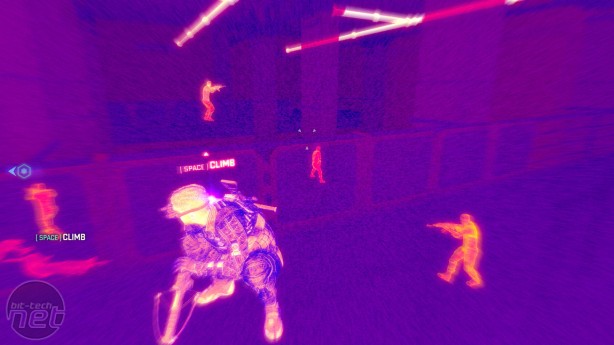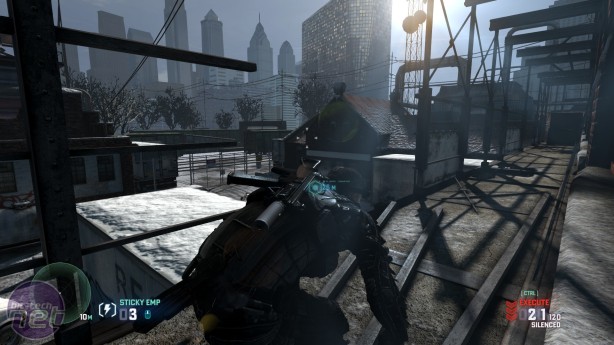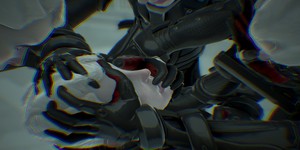
Splinter Cell: Blacklist Review
The locations are intriguing and the levels mostly well structured. The first two or three missions are perhaps overly linear, but they soon open up and allow plenty of ways to get around, above or below enemies. Furthermore, Blacklist allows you to approach these missions as stealthily or aggressively as you want. Actions are divided into three categories: Ghost (non-lethal stealth), Panther (lethal stealth), and Assault (explosions and stuff).Old-time Splinter Cell fans will be pleased to hear that 90% of the time sneaking through the dark completely unnoticed is a viable option. Sam's acrobatics and paradoxical ability to hide in shadows despite being covered in bright green lights have both been largely restored, but cover still plays an important (and sensible) role in staying unseen. The only difference is if you do get spotted, defending yourself in all-out action is not impossible.
In fact, the most fun way to play Blacklist is to go with the flow, and use whatever methods feel most appropriate at the time. For example, the "Last Known Position" mechanic retained from Conviction, which shows where the enemies think you are hiding, allows you to tactically dispatch your opponents in a Predator-style manner, or simply to avoid them completely. The only real problem with the way Blacklist plays is the cover-system. This has also been adopted from Conviction, and involves pressing Q to put Sam's back to a surface, and then the Space bar to shift forward to another position. It's unnecessarily fiddly, and somewhat arbitrary about what counts as "cover". It also isn't particularly well suited to the more open levels of Blacklist. Accidentally moving into an opponent's line of sight, or not being able to move quickly enough away from an approaching guard, is an all too frequent occurrence.
Alongside the campaign are four types of side-missions, three of which can be played alone or cooperatively, and one that is cooperative only. The first three are each designed around the Ghost, Panther, or Assault style of play, and respectively involve retrieving information without being seen, quietly taking out a set number of enemies in an area, or holding off increasingly tough waves of enemies. Of the three, the second is the most fun, especially in coop, as you work together to silently and methodically eliminate your opponents.
Conversely, the stealth missions are best played alone, as a partner just doubles your chances of being spotted and having to re-start the mission. Oh yes, it's worth pointing out that Blacklist employs a checkpoint-save system less well suited to the job than a spade to brain surgery.
Last but by no means least is the multiplayer component, Spies vs Mercs. This comes in two flavours. "Classic" that pits two speedy, stealthy yet weak spies against two slow but heavily armed mercenaries, and "Blacklist" that doubles the player count for both teams and allows for custom load-outs. The result is Blacklist is a more frantic, action oriented experience, whereas classic is slower and more tense, as spies flit through the larger areas of darkness while the mercs lumber around, constantly looking over their shoulders. It is a little stripped back compared to the mode in Pandora Tomorrow and Chaos Theory. Spies can't jump on the mercs back, for example. But it nonetheless creates the right atmosphere, and is a welcome addition to the other content .
Sam Fisher is but a ghost of the character we once knew, and the game's righteous defence of America by any means necessary feels more than a little out of step in the days of NSA mass surveillance. Nevertheless, Blacklist is still the best Splinter Cell game since Chaos Theory. It's generous, smartly designed and enjoyable to play, although it may leave a sour taste in the mouth by the time of the story's conclusion.

-
Overall81 / 100


MSI MPG Velox 100R Chassis Review
October 14 2021 | 15:04












Want to comment? Please log in.